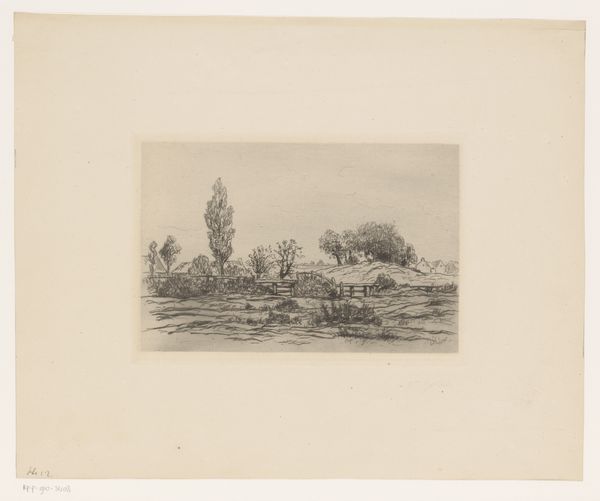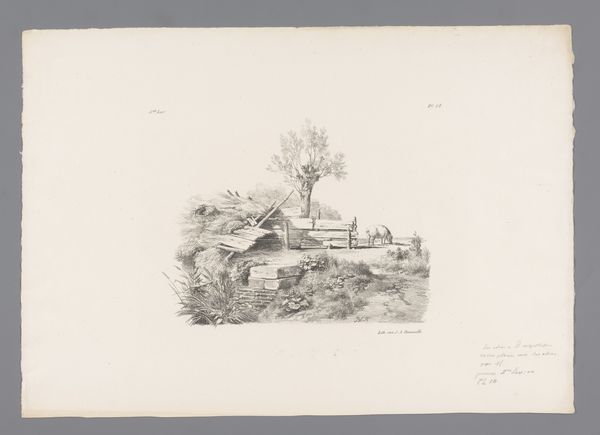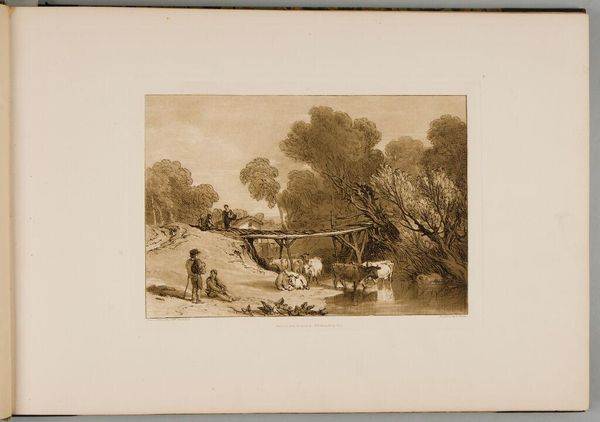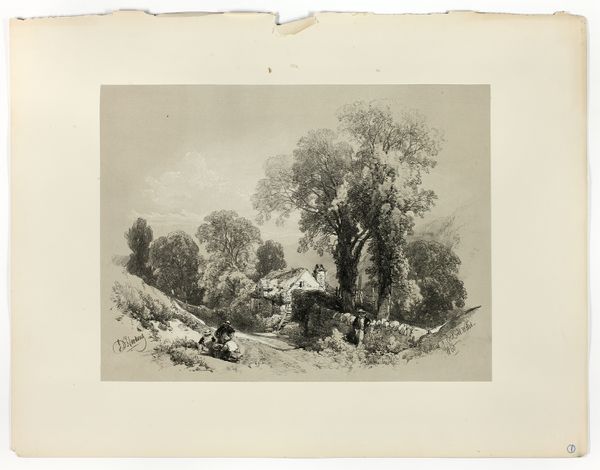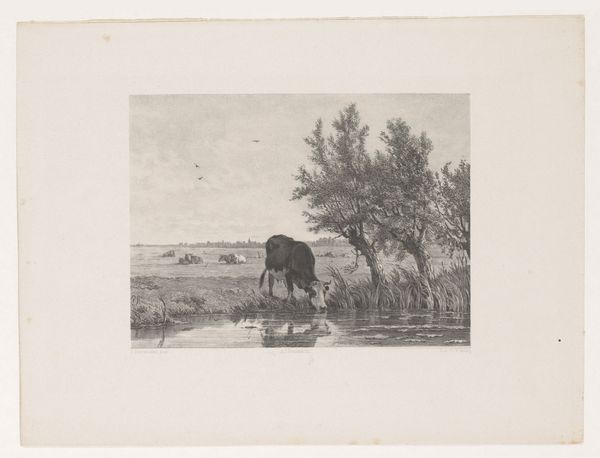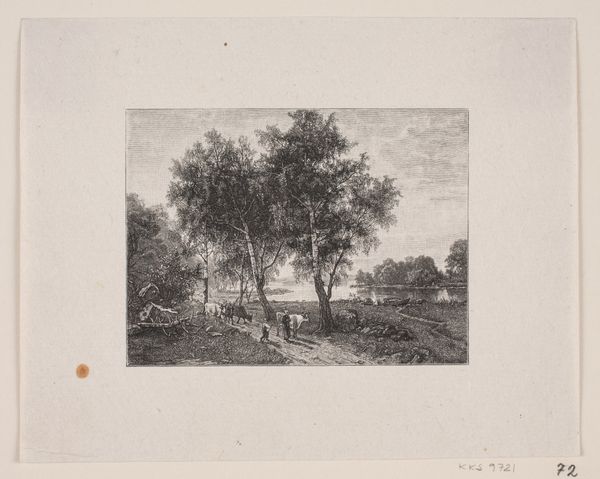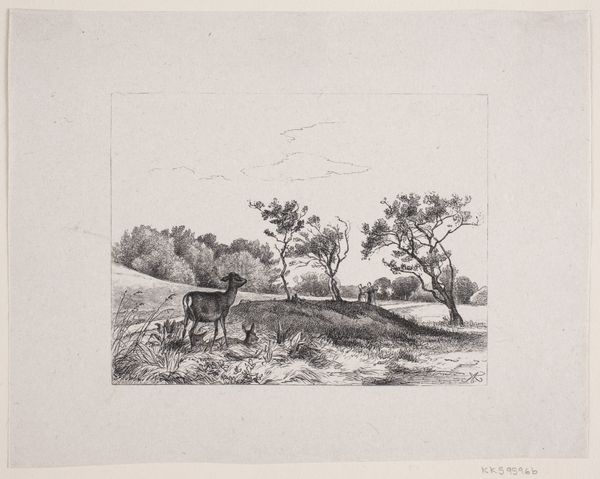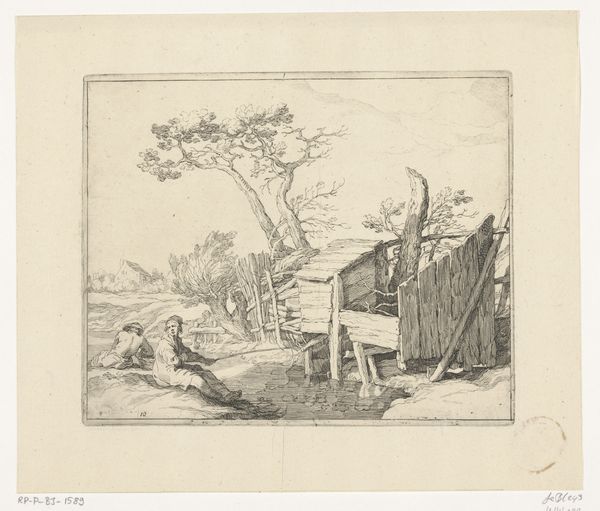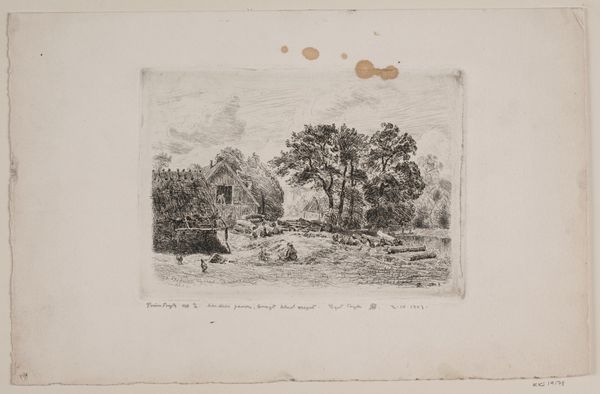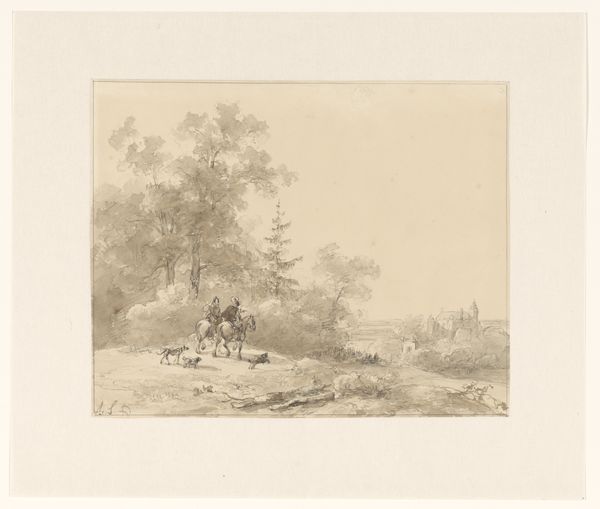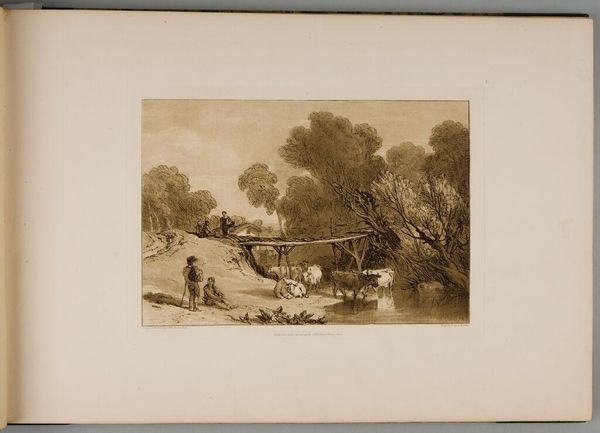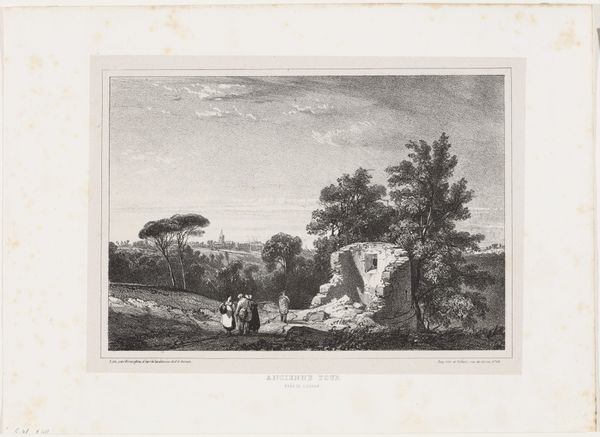
drawing, lithograph, print, paper, pencil, graphite
drawing
lithograph
landscape
figuration
paper
pencil
graphite
realism
Dimensions 175 × 252 mm (image); 283 × 382 mm (sheet)
Curator: James Duffield Harding's "Landscape with Boy Fishing," a lithograph printed in graphite and pencil on paper, captures a seemingly tranquil pastoral scene. What catches your eye first about it? Editor: The subdued tones, almost monochromatic palette, give it a nostalgic, melancholic feel. I’m immediately thinking about the paper itself. It has texture. I wonder, how did the graphite interact with the grain of the paper during the lithographic process to create these specific gradations? Curator: I think that mood is emphasized by the recurring visual motif of crossing over or traversing divides: the bridge bisecting the composition, the boy suspended between land and water, and the tree’s branches reaching towards the other side. The river becomes a sort of liminal space. Does this evoke any specific cultural meaning to you? Editor: Right, there is certainly an inherent sense of temporality present in the artwork: the fisherman, the stream, the organic components. Looking at the artist's lithographic technique, his manipulation of line thickness is quite beautiful; it gives depth, like the soft bank of the river that creates such delicate shadows. I wonder, how widely were prints like this circulated and consumed in their time? Curator: Harding was highly influential, especially in the democratization of landscape art through accessible printmaking. This imagery taps into archetypal longings for simpler, agrarian ways of life. I would say that he also aimed to promote a romantic vision of nature as an escape from modernity through landscape. Editor: But "escape" for whom? The materiality suggests a level of access tied to the printmaking technology of the era, the paper stock, the inks... who had access and how accessible was such artwork? Did its value stem from its inherent beauty or from a market created around images of the pastoral? Curator: It’s clear that we still carry idealized representations of such landscapes and continue to attach value, whether monetary or symbolic, to their creation. This piece is evocative for that very reason; it’s a visual artifact loaded with sentimental meaning across generations. Editor: And its materiality, down to each careful graphite stroke and printed impression, reminds us to keep digging to examine not just beauty, but who benefits, and how value itself is constructed around the making.
Comments
No comments
Be the first to comment and join the conversation on the ultimate creative platform.
